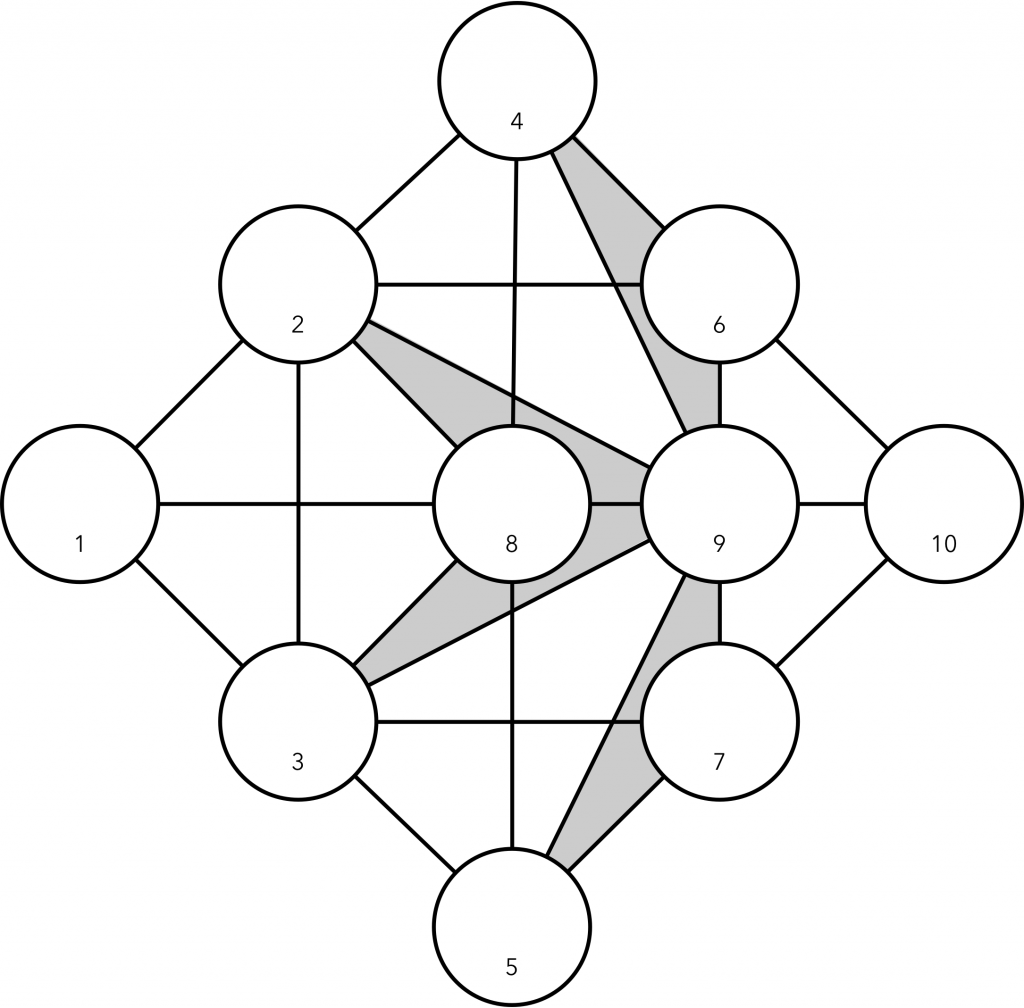So, there’s an idea from Herman Hesse’s Magister Lundi of “The Glass Bead Game” which is sort of a game played out in the similarities between different and complicated things. I was introduced to the idea of it back in the the days of the mostly text World Wide Web by Hipbone Games (whose website still exists!). It was an interesting evolution of other association games I’d played, and I’d really stuck with me. I’ve written before about the glass bead game itself and some tricks for using it when GMing, but today I want to talk about its advantages in a more abstract fashion.
I’ve been thinking a lot lately about tactical GMing. Game books are full of great general advice, and there’s a lot of wisdom to learn from out there, but when I think about how that advice connects to the moment-to-moment decisions I make at the table, it can sometimes be hard to really explain how it works. So I started thinking about some of the games I’ve run most recently in really granular terms, and I hit upon a particular pattern.
For me, the single most useful skill for GMing flexibly and responsibly is the ability to look at a thing and immediately see the number of other things it might be.
Now, I’m sure that for some of you that sentence made sense, and you can probably skip the next little bit. But if that sounded like gibberish, let me unpack a little bit.
As an example, let’s use Superman. He’s pretty well known, so he’s a pretty easy touchpoint. Let’s say I want to use Superman in my game or story or whatever. I can do that, sure, but what if I take a moment to think about all the things Superman is:
- An alien
- An icon of Truth, Justice and the American Way
- Power incarnate
- Mild mannered reported Clark Kent
- Nemesis of Lex Luthor
- Impossible – no one can be that good
- Inspiring – example of how power can be used
- The creation of Jewish Artists
I could go on for quite some time – Superman is an incredibly rich subject, enough so that I’m confident that I missed some of your favorites.
Now, this is an interesting curiosity, and is maybe a slightly useful exercise in helping me think about how I use Superman in my game, but in isolation, this is not that helpful. But now here’s a thought exercise: Do the same thing for Batman. It should be easy, he’s just as iconic. You don’t even need to write them down, just hold a couple of truths about Batman in your head while you look at that Superman list again – do any of the items on your Batman list resonate1 with anything on the Superman list? Maybe with some combinations? One classic examples, of course, is that Batman has no powers, so any the he conflicts with Superman (Power Incarnate), that difference is cast into sharp relief. Other possible resonances might be between their beliefs, or perhaps even between their respective civilian guises!
This is, I admit, a slightly mechanical exercise. For a GM or writer who already knows Batman or Superman well, there’s no need to articulate the list because they have already internalized it, and as soon as you say “Batman and Superman”, they’re mentally looking for those points of connection. In a perfect world, we’d all have a similar level of understanding of every idea we consider, but it’s not a perfect world.
And that is where the glass bead game comes in. As a game, it is a means to exercise that muscle of seeing all the versions of a thing and how those connect to the versions of other things. As a GM, that is a muscle that you want to exercise and get strong because in actual play you are bombarded with a constant series of things that make up the game you are running. As with Batman and Superman, if you can see the constellation of ideas that make those things rich, then you can use that to connect to other things and you will discover that you are no longer reliant on ideas, because you have an excess of conclusions.
That probably sounds like hyperbole, but I’m 100% sincere. Once you get used to seeing the connections between elements, you stop feeling like you need to create ideas, and instead they become something that you discover. That is a distinction that matters a lot when mental energy is at a premium – it takes a lot more juice to go “Ok, I need a good plot for lord Pembleton, let’s think of something” than “Of course, Lord Pembleton is working with the Blood Crows!”. That “of course” has a feeling that you will come to appreciate, because it usually is accompanied by a crowd of “Oh, and also!”s because it’s all so logical.
This is probably a less magical view of creativity than is often put forward for GMs. Saying that there’s a mechanical exercise (playing the glass bead game) which can improve a technical skill (drawing connections and inferences between disconnected nodes) and that leads to better creativity in play is antithetical to some views of the universe, and if that’s you, then it’s also an easy exercise not to do.
For everyone else, please just try playing the game. Don’t just think about it. Do it. Especially with other people. Even if you are brilliant and creative and can see tons of connections, you will still have your eyes opened by what other people see. This is one of the great powers of the glass bead game – the connections it calls for are the ones that make sense to the player. Your incredible knowledge of the tapestry of classical literature is on equal footing with another players love of puns.
Anyway, beyond a certain threshold, I can only explain so much. Beyond that, it’s on you to try it or not.
- Ok, that is not a super technical word, and I cop to that. In the physical world, resonance is something that we can measure, but when we talk about ideas resonating, it’s pretty subjective, so to unpack it a little, ideas resonate when the idea of combining them is more interesting than any random ideas. One might reveal nuances of another, or cast another into sharp contrast. There’s a little bit of “You’ll know it when you see it”, but one of the subtle benefits of doing more glass beading is that it will help you get more sensitive to resonance, so if the idea is still kind of fuzzy now, it will get clearer with practice. ↩︎

